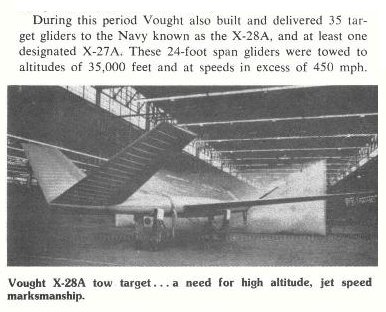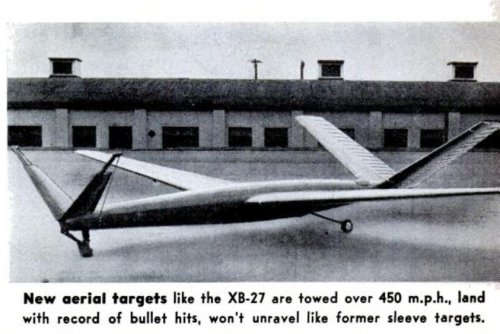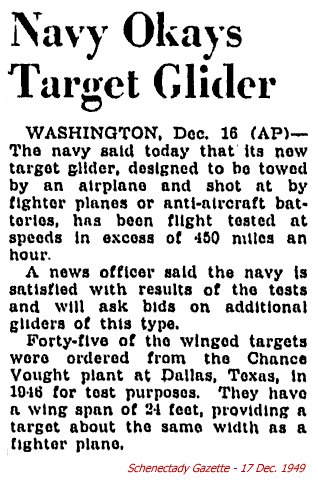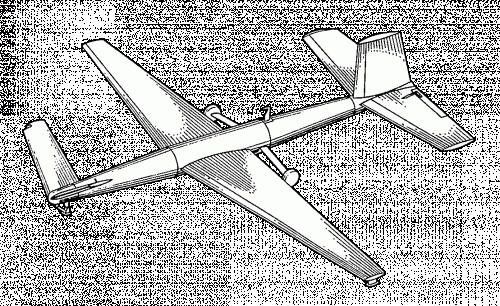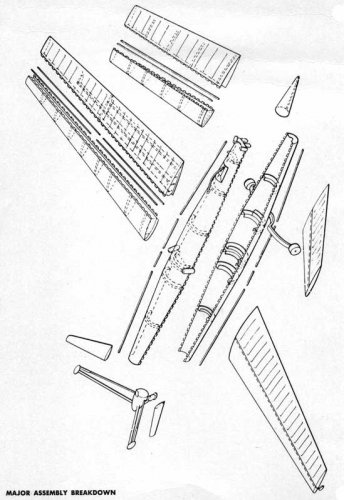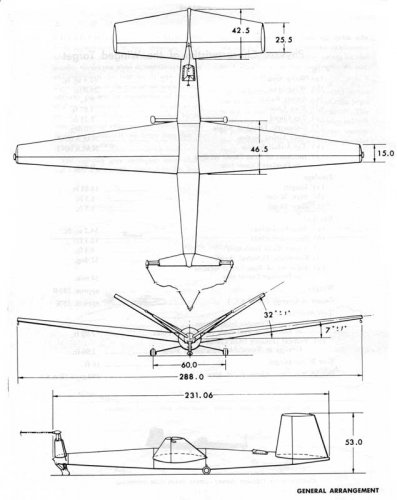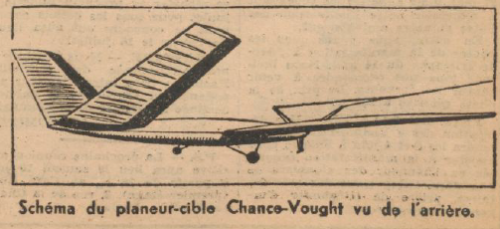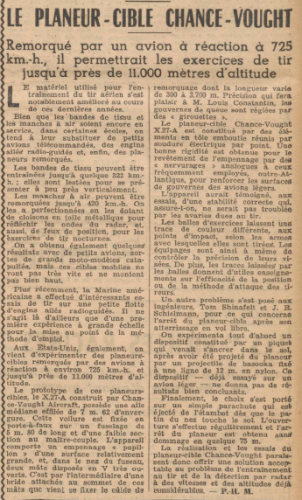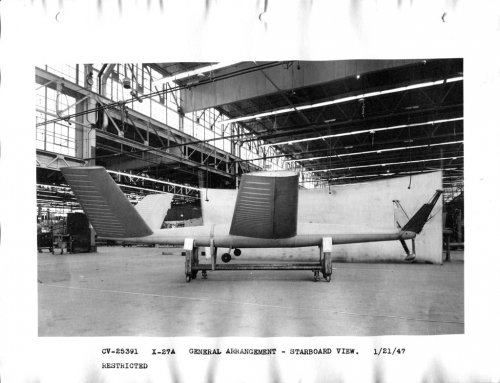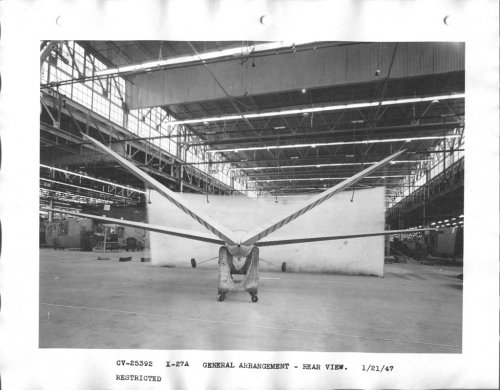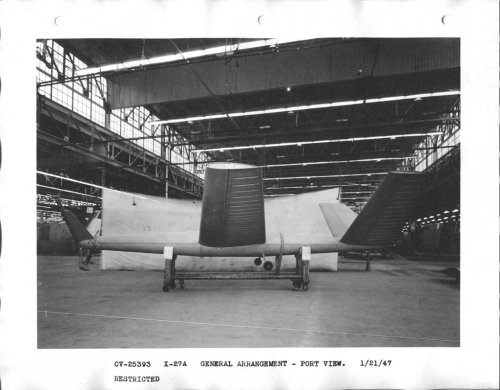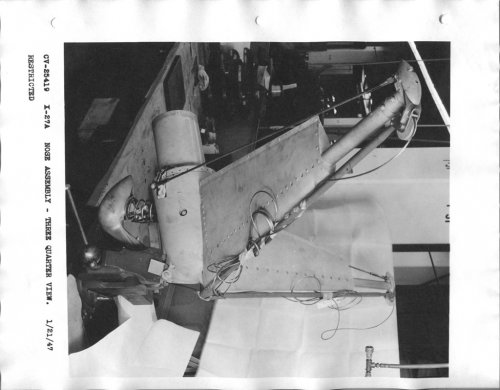After some further investigation I was able to isolate three items from 1950 describing the targets in more detail. However the chronology is far from easy to make out. Indeed, these target gliders seem to have been tested from 1946 to 1950, yet the Vought company received a contract for the V-369 (supposedly the X-28A) only on March 30, 1950. Could the early ones have been designated X-27? And if so, how different were they? (the two pics we have show apparently identical targets labeled as "XB-27" and X-28A respectively.) And if the V-369 was to be a development of the X-27 targets, what Vought designation did the X-27 carry? In 1946, only two projects appear in the list as "unmanned concept": the V-353 or P/A-VI and the V-355 or P/A-XIV, but both of these were missiles. Perhaps the V-360, dated 1947, but described as a "remotely controled target for US Navy"?
from Aviation week and space technology: Volume 52 (1950)
"Installation of tow target automatic reels and cable in 14 North American B-45 four-jet bombers is being completed at Long Beach, for towing the new Chance Vought high-speed 20-ft.-span target glider. Tow cable is hydraulically operated and controlled from the tail gunner position in the bomber. Tests have already been run on an experimental installation at Edwards AFB, including fighter attacks on the target with live ammunition after target is reeled out to operational distance behind the bomber."
from United States Naval Institute Proceedings: Volume 76 (1950)
"High Speed Targets Technical Data Digest, Feb. 1.— The Navy says its new winged aircraft tow targets have been flight tested successfully at altitudes of more than 35,000 ft. and at speeds exceeding 450 mph. Having a wing span of 24 ft., this new target glider greatly resembles the configuration of conventional aircraft. It will be used for target practice by both day and night fighter planes and to test the skill of antiaircraft crews.
Altitude is limited only by the ceiling of the towing plane, and enough structural strength has been built into the target to allow for towing speeds around 450 mph. It may be launched by normal drag takeoff or by snatch pickup. Provision is made for a 10-g ultimate acceleration in the snatch pickup. In landing, a drag parachute was designed to stop the target within 200 ft. after its release by the towing plane. The chute is carried in the tail section of the tow glider and is released by a trip in its nose section as soon as it comes in contact with the runway. The winged target is constructed of metal to aid radar reflection, and aluminum has been used generously to meet its weight requirements. Its design has been arranged to facilitate manufacture, maintenance, and assembly.
The Dallas plant of Chance Vought Division, United Aircraft Corp., was awarded an experimental contract in 1946 to build 45 models for flight testing and evaluation. The testing is going on at the Naval Air Test Center, Patuxent."
from Aero digest, Volumes 60 à 61 (1950)
"The Chance Vought Co. has developed also a new large metal tow target-plane, designed to appear like a conventional airplane. It has been tested at altitudes of more than 35000 ft and at speeds in excess of 450 mph. It is attached to a powered tow-plane by means of a bridle towing gear and cable that may be reeled out as much as 12000 ft. It is reeled in to about 200 ft for landing. The nose skid releases the towline upon contact with the ground, and a parachute from the tail to slow down the craft. The target-glider is 19 ft long, wing span is 24 ft and the body is bullet shape. Tests on this new target were conducted by the Naval Flight Test Center, Patuxent River, Md. Until its advent, banners and sleeves were used as targets."

